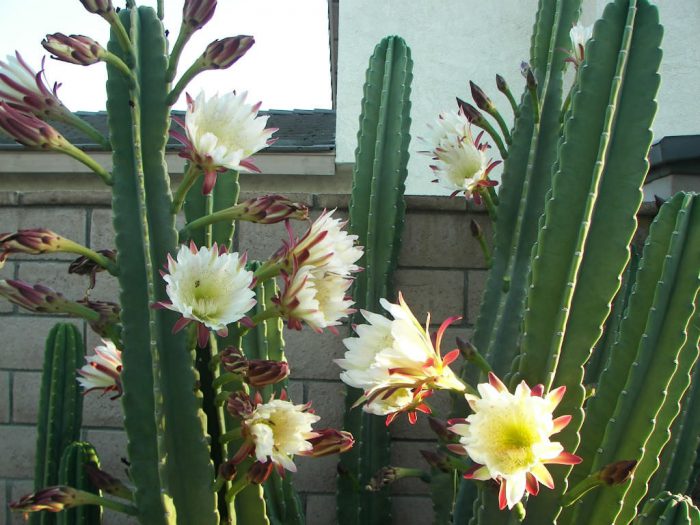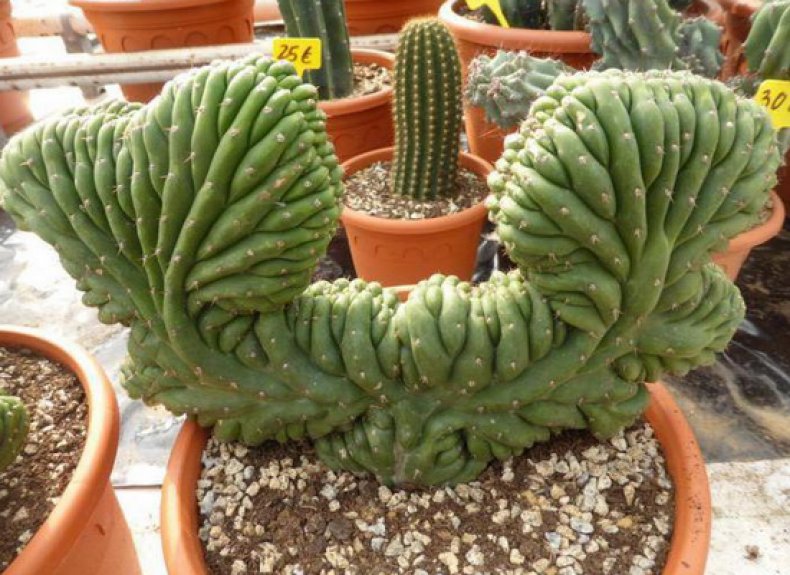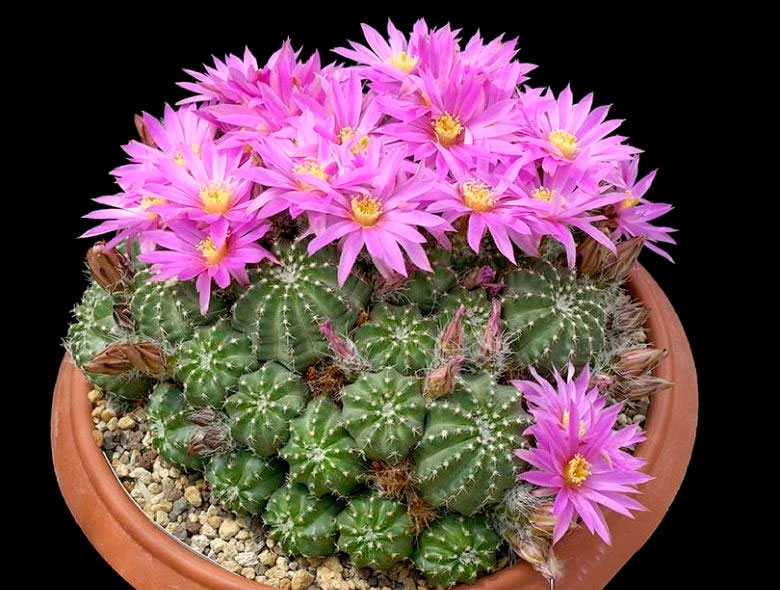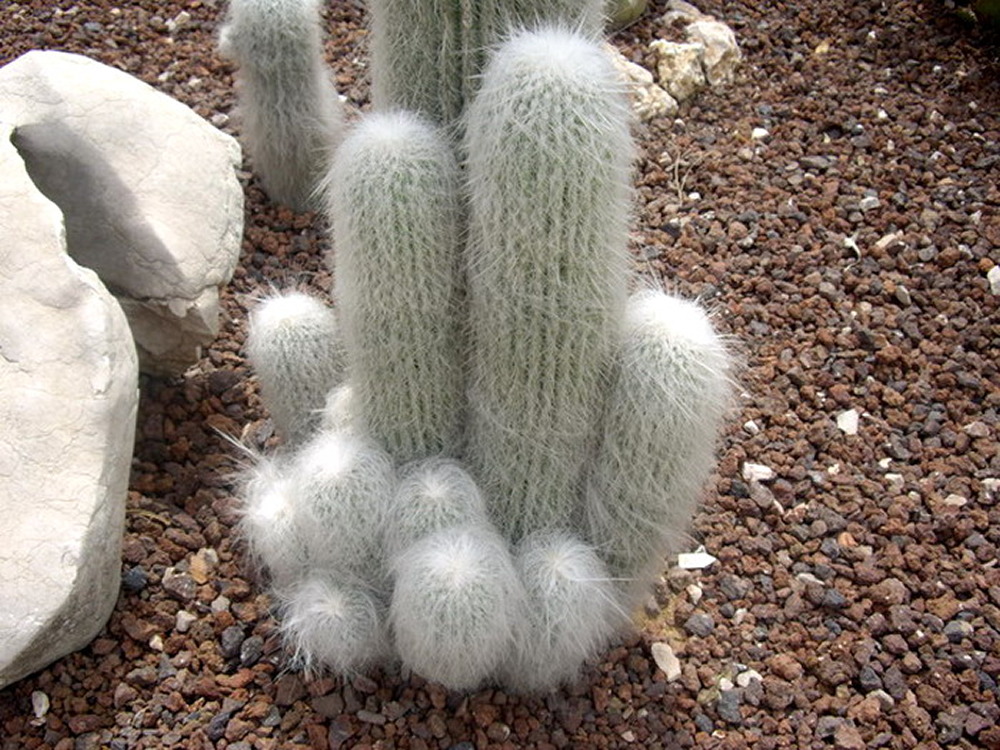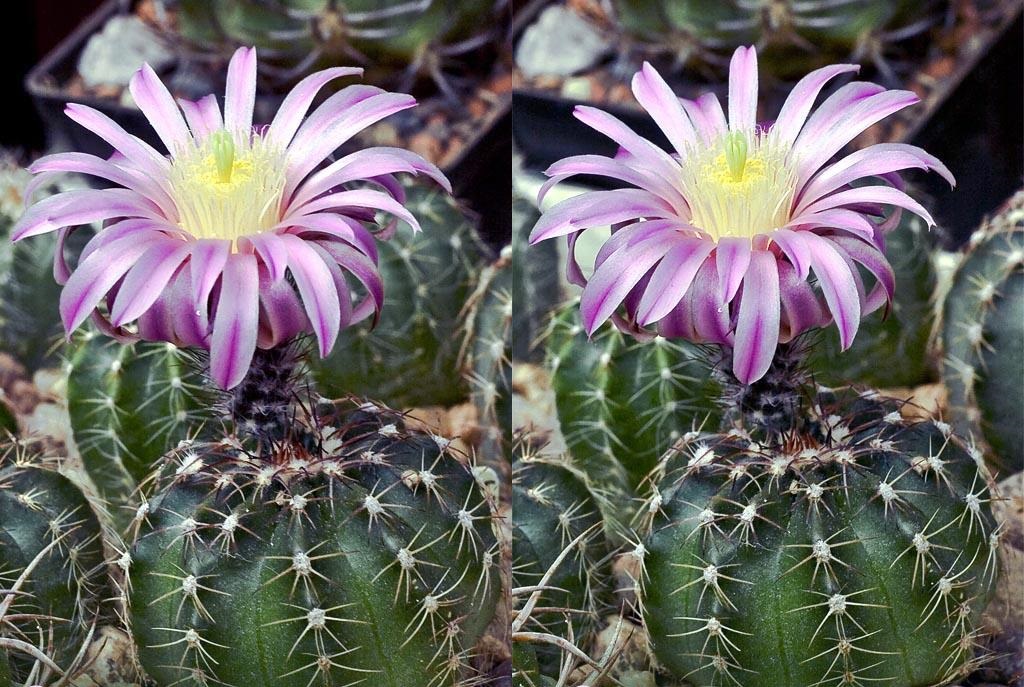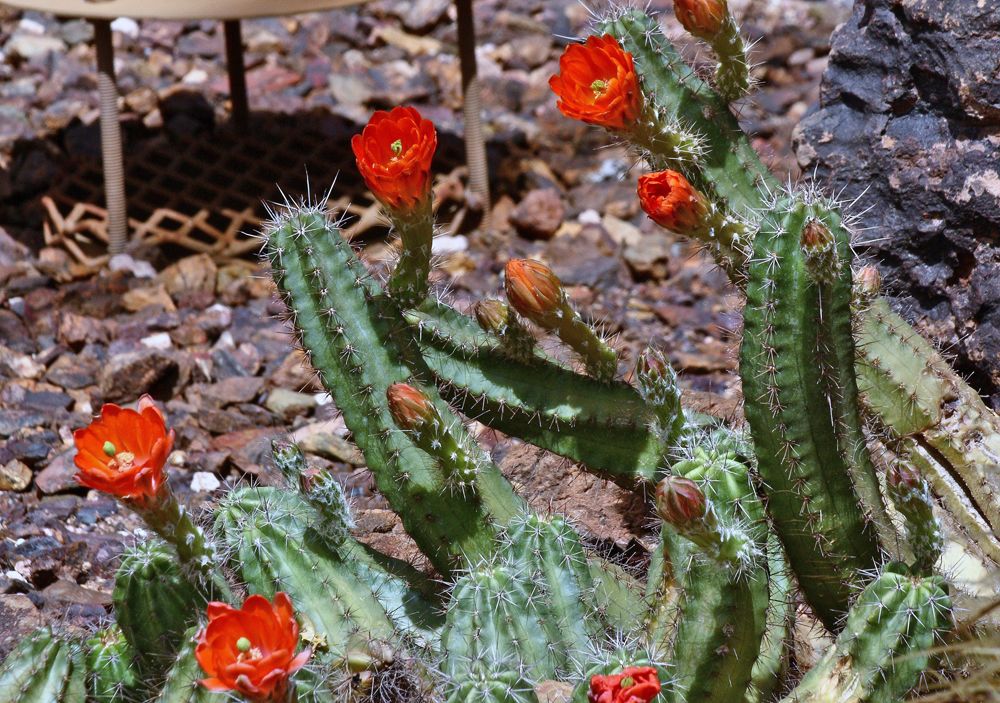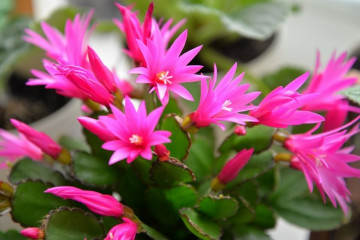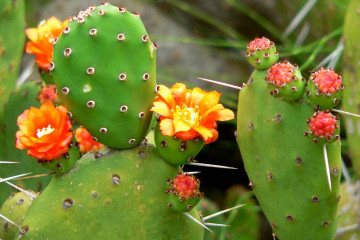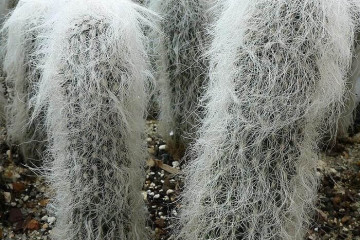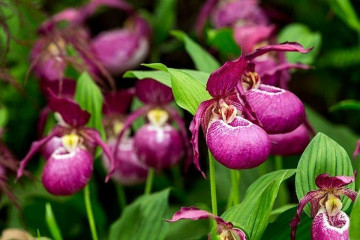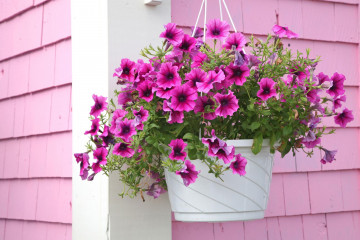Cereus cactus: popular plant species and caring for them at home
Content:
Every home wants to create coziness and beauty. Greening of window sills and wall shelves contributes to the overall interior of the room. Many people prefer not only flower plants, but also exotic ones such as cacti. Very often these succulents can be found in pots. Many of them belong to the genus Cereus. Plants take root well at home, especially if you create all the necessary conditions for them.
Types of cactus Cereus
Cereus has a lot of species and subspecies. Many of them are grown as decorative indoor plants. Its flowers perfectly decorate the interior of the apartment.
Cactus Cereus Peruvian
The cactus Cereus rocky or Peruvian is often grown at home. It has an elongated cylindrical stem. There are jagged edges along the edges, which stretch from bottom to top. The color of the stem is green with a gray tint. In indoor conditions, it reaches 0.5 m in height. In some cases, it grows up to 1 m.
Forms white flowers, the petals of which open only at night. The plant gives off a pleasant floral scent. At the end of flowering, a red berry is formed. It can be eaten.
Cereus monstrous
It is a subspecies of the Peruvian Cereus. In nature, it reaches 6 m in height, in diameter - 5 m. It has an unusual shape, its stem grows in an arbitrary direction, forming various intricate shapes. It never blooms, the growth of greenery is slow - about 1 m per year.
Cereus monstrous is also grown at home. Its stem grows strongly. The direction, shape and final drawing are very diverse.
Cactus chamecereus
Family - Cactus. Origin - Argentina. It is a low-growing small plant that is great for home decor. Forms low stems, about 15-20 cm, light green in color. They have light needles. The Chamecereus cactus is prone to branching, flowering begins at 3-4 years of the vegetative period.
It gives flowers of bright red or brick color, funnel-shaped. They are large, with a diameter of 7-8 cm. Reproduction occurs by shoots or seeds. The plant needs a tight pot to bloom.
Cactus echinocereus
The succulent plant occurs naturally in the southern regions of North America. It is often grown on windowsills as an ornamental plant. It reaches a height of no more than 60 cm. The stem is cylindrical, rounded on all sides. It branches strongly, forms many processes. The needles are light, gathered in bunches, forming regular rows.
Echinocerus cactus blooms with large pink flowers in the shape of a funnel, consisting of a large number of petals. At the end of flowering, a juicy, tasty edible fruit is formed.
Cereus species that are most commonly found:
- Echinocereus pectinatus. A stunted stem up to 15 cm, with ribs, they have needles of pink or yellow color.
- Echinocereus knippel. Elongated stem with ribs, white needles are located on it. It blooms with pale pink flowers, similar to chamomile.
- Echinocereus rubrispinus. Stunted stem with white needles. It blooms in spring with large pink flowers.
- Echinocereus subinermis. Does not form thorns.It blooms several times a year with yellow flowers.
Others
The Peruvian cactus has many varieties, which are also often grown at home:
- Cereus azure. It was named so due to the color of the stem. It has a slight bluish tint. The stem is straight, cylindrical, with ribs on which there are needles. It blooms with white funnel-shaped flowers.
- Cereus is giant. Reaches a height of 20 m. Has a dense stem and branching from it. It blooms from May to June with flowers of yellow, red, orange and green flowers. Then it forms edible fruits.
- Oreocereus cactus. Stem length - 8 cm, branched. The needles are of different colors: red, yellow or white. Flowering begins at the 10th year of the growing season. Flowers become purple, lilac or brick-colored.
- Cactus Cephalocereus. It has a cylindrical stem 10-20 cm long. A distinctive feature is the presence of white hairs. They make the cactus look fluffy. At home, it does not bloom.
Rules for caring for a cactus at home
In order for a succulent to delight with its flowering, it needs to create optimal conditions for this, as well as monitor watering, lighting, and do top dressing. Cereus Peruvian home care is described below.
Room temperature and lighting
Like other plants, the Cereus flower prefers good sunlight, with direct sunlight. It is desirable that the sun hits the plant 8 hours a day. At the beginning of summer, it is recommended to create a little shading on the windowsill in order to prevent burns on the cactus. In the evening and at night, the flap is removed.
In summer, Cereus can easily tolerate any temperature, as they come from hot countries. In winter, there is a period of rest and recuperation. At this time, it is better to transfer the succulent to a room with a temperature of + 13-16 ° C.
Soil and fertilizing
You can use specialized ready-made soil for cacti. It can be purchased at any food supply store. Usually it is marked "for cacti and succulents".
You can also cook it yourself:
- Leaf humus, sod land, river sand, charcoal are mixed in a container.
- Then the mixture is poured onto a baking sheet and calcined in an oven at 100 ° C for 20 minutes.
- Once it has cooled down, you can use it.
Before planting or transplanting, it is imperative to measure the number of soil acidity. It should not exceed 6.5. Also, the soil must have air permeability and water permeability.
You can feed cacti every year in early spring. The optimal fertilizers for them are special mixtures for succulents, in which there is no nitrogen. They are brought in from March to July.
Watering
Succulents perfectly accumulate moisture, therefore they are able to be without water for a long time. Do not get carried away and water the plant daily. They monitor the condition of the soil, if it dries up, then it's time for irrigation. In winter, the amount of water is reduced, since the cactus is dormant. It is easy to care for Cereus, they are unpretentious in care.
Air humidity
Cereus are used to dry air. It is especially recommended to observe this parameter in spring and summer, during the period of plant activity. The cactus does not need to be sprayed with water.
Transfer
It is recommended to replant the cactus every three years. It should be borne in mind that it grows slowly, and the intake of nutrients from the soil is low. Therefore, you can use old soil, slightly diluting it with humus and sand. The procedure is best done after the end of flowering, before the start of wintering.
Reproduction
There are two ways to propagate a plant:
- seeds;
- shoots.
The seeds are harvested from the resulting fruit.It is removed, cut, and the bones removed. Then they are dried. In the spring, they drop it in a container with soil, cover it with cellophane wrap and take it to a warm place. After germination, they wait until the cactus grows up to 3 cm, and are planted in new pots.
Shoots are best rooted in wet sand in spring. They are carefully removed from the mother cactus with tweezers. Then they are transplanted into a new container filled with wet sand. After 7-10 days, they take root.
Diseases and pests
The immunity of cacti is very strong. They practically do not get sick, they are resistant to all fungal and bacterial infections. The only problem is root rot when waterlogged.
Also, harmful insects often breed on cacti. They are located between the needles. Ticks, scale insects, scale insects are most often affected. They can be seen by signs: the cactus stalk will begin to change color, and light spots are formed. This means that you need to carry out the treatment with an insecticide.
Cacti of the genus Cereus are of extraordinary beauty during their flowering. They perfectly complement the decor of the room. These plants are native to southern and arid countries and are easy to care for. Keeping them at home will not be difficult. They are rarely watered and fed, the size does not interfere with placing other crops and flowers nearby. Cereus also have a huge species diversity, almost all of them can be grown indoors.
